#lithuanian cinema
Text


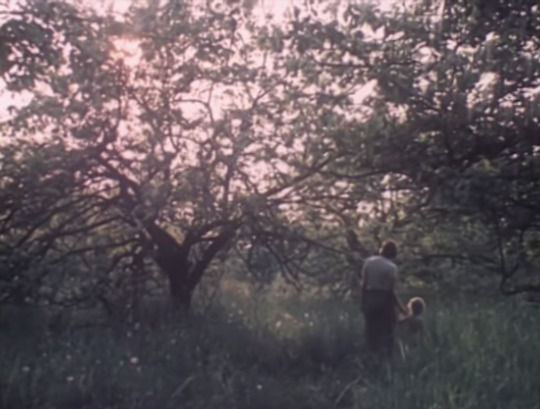
"Imu jūsų duoną" 1987
244 notes
·
View notes
Text





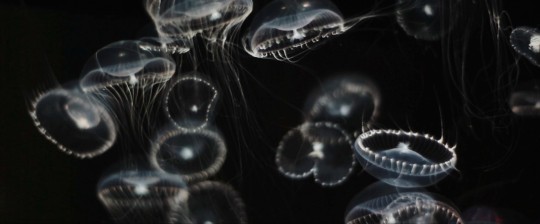
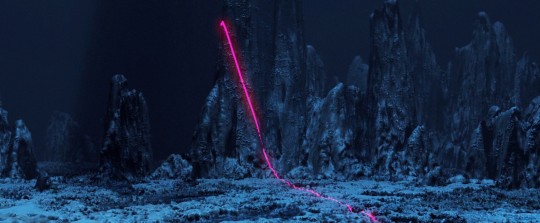



Aphotic Zone (2022), dir. Emilija Škarnulytė
#film#cinema#Lithuanian film#Lithuanian cinema#short film#documentary#aphotic zone#emilija škarnulytė
51 notes
·
View notes
Photo
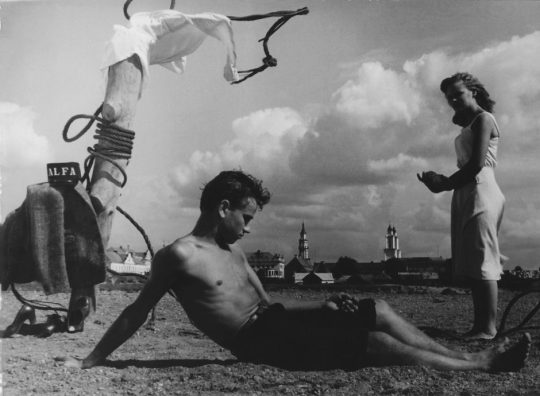
Adomas nori būti Žmogumi (Adam Wants To Be a Man) - Vytautas Žalakevičius - 1959 - Lithuania
#lithuania#soviet cinema#lithuanian cinema#world cinema#film still#lithuanian#vytautas Žalakevičius#Adomas nori būti Žmogumi#adam wants to be a man
30 notes
·
View notes
Photo




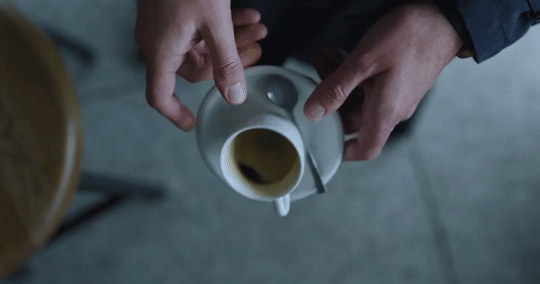


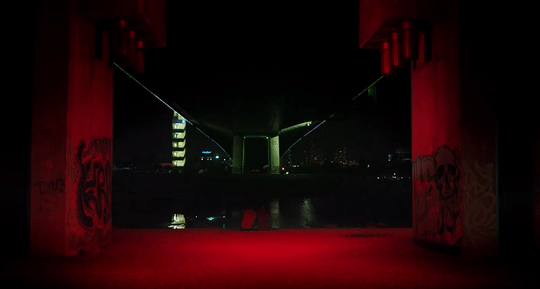
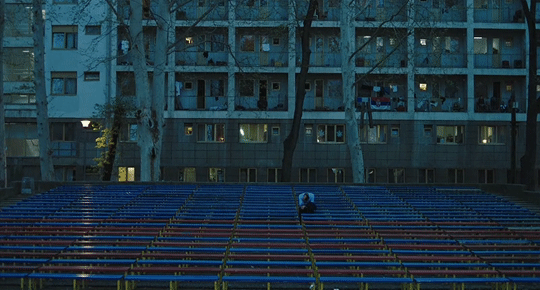

ADVOKATAS (2020)
dir. Romas Zabarauskas
Life drifts by for gay corporate lawyer Marius, his time spent teasing friends and chasing young lovers. One day, Marius' estranged father dies. Mourning turns to love as the lawyer finds an unanticipated connection with a sex-cam worker Ali - a Syrian refugee stuck in Belgrade.
(link in title)
#lgbt cinema#gay cinema#advokatas#advokatas 2020#the lawyer#the lawyer 2020#lithuanian cinema#lgbt#gay#lithuania#lgbt movie#gay movies#lithuanian movies#lgbt film#gay film#lithuanian film#lgbt media#gay media#queer cinema#european cinema#romas zabarauskas#eimutis kvoščiauskas#doğaç yıldız#2020#2020s#2020s movies#2020s cinema#2020s films
22 notes
·
View notes
Text
youtube
Looks like French action art-haus. I wanna watch it
1 note
·
View note
Text
Remember to Blink
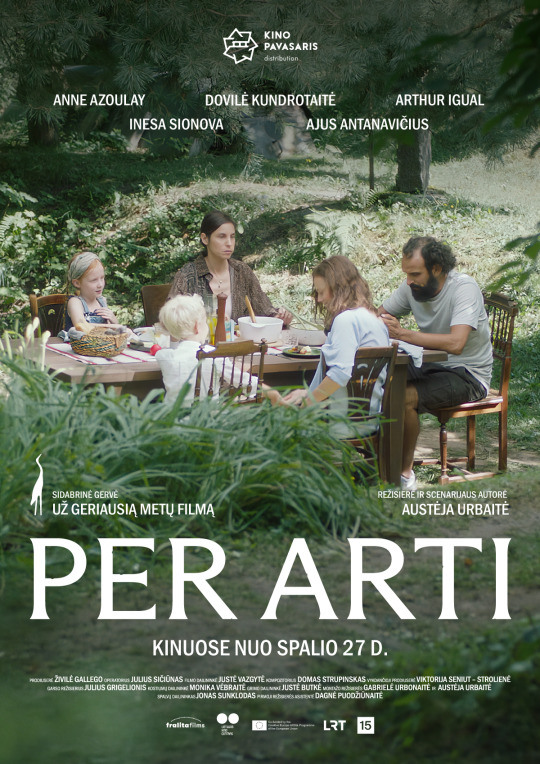
Spoiler Alert!!
Did you ever think that a mother could threaten to perpetuate her motherhood? Have you ever seen it being prohibited to teach a language to children in the easiest manner? This is what the EU Film Festival Lithuanian-French gem Remember to Blink brings to you. Especially for a linguistics student, it was a treat to watch. Stunning visuals and backdrops coupled with an attempted bilingual adoption make for a surprisingly intriguing film.
When the bilingual nanny Gabriele/ Gabi wins the affection of the two adopted children Karolina and Rytis, she also gains the appreciation of the father who is obsessed with sculpting Medusa and playing the "good cop" parent, but she also must face the acerbic brunt of the jealousy of the control freak mother. It is disconcerting when the mother does not keep her word of letting her new children retain their mother tongue Lithuanian because it allows them to have a special relationship with Gabi which she is unable to pry into. Moreover, she forbids them from speaking Lithuanian and shift fully to her language French, not even paying attention to her own excuse about bilingualism being a boon during higher education. The scariest part is when she proceeds to change the children's names to French ones out of sheer spite towards Gabi.
You question yourself about the ethics of all of it as the acculturation process does not quite seem to succeed. The children are deprived from communicating with their biological mother, from speaking their language at ease, from retaining their identities. Instead of adoption, it sometimes feels like a coerced acculturation. The culture shock pushes the precocious Karolina into Gabi's arms, wishing themselves to be sisters in the face of a harsh foreign tongue and culture, and to impudently spit into her adoptee mother's face when confronted. You see then an adoption almost going wrong, and you see a rescue almost in operation, as Gabi tries to take the children away with her, saving them from the monstrous love of the mother, but things hardly ever work out ideally. An open-ended denoument helps you retain your own illusions and complaints simultaneously, and at the end of all of it, you ask yourself this too: who is it that the auteur wants to remember to blink, the mother, Medusa the Gorgon, or you?
#films#movies#currently watching#recently watched#eu film festival#remember to blink#lithuanian cinema#french#bilingual#adoption#language learning#languages#impressions not reviews
1 note
·
View note
Text
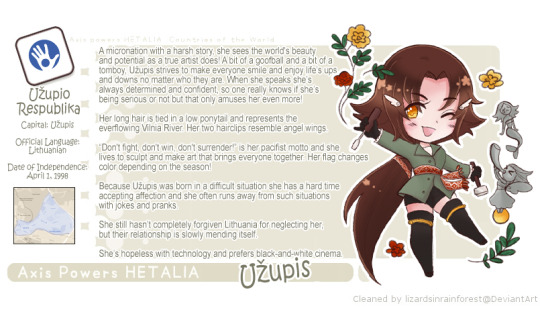



I've always wanted to do this character card with one of my original characters, and here I am. My 12 year old self would cry from joy since I even tried to imitate the artstyle but I got too tired at the end, so... I'll just put her here. I even made spanish versions and GIF versions because the flag changes color depending on the season which is so good. My research might be wrong so if there are errors I will gladly fix them.
Meet Užupis, a micronation located in Lithuania!
I have all her information here because I got too invested and the Užupis Constitution is too much fun. I even wrote what her relationship with others characters is like... I kinda love her, actually. She's Lithuania's little sister with a harsh story on her back. Too harsh, honestly, she deserves the whole world. If you'd like to read more, here it is.
Information:
Name: Republic of Užupis (Užupio Respublika)
Katakana: ウジュピス (Ujupisu)
Human name: Anželika Laurinaitis
Katakana: アンジェリカ・ロリナイティス (Anjerika Rorinaitisu)
Alternate Spellings: Angelica, Angelika
Age: 17
Gender: Female
Birthday: April 1, 1998
Hair color: Brown
Eye color: Golden
Height: 167 cm
Appearance:
Užupis appears as a teenage girl of golden eyes with a confident and relaxed smile at all times, keeping her long hair in a low ponytail and wearing two hairclips that resemble angel wings. She wears traditional masculine Lithuanian clothing; a long green coat with a sash surrounding her waist, which changes color depending on the season and her mood. Under the coat she wears a white shirt and black shorts. She wears high black boots and gloves with a circle on the back of the hand and she sometimes carries sculpting tools with her.
Personality and Interests:
Located in the capital of Lithuania, Vilnius, she is a neighborhood full of artists and bohemians of all kinds since Soviet times, which makes her an artist as well, though she loves sculpting the most and has many projects ongoing at the same time. With a knack for pranks and jokes, her carefree but determined attitude makes everyone wonder if she’s being serious or not, which only amuses her more. She declares herself a pacifist and free spirit and everflowing “just like the River Vilnelė!” but is shown to be easily influenced by the other micronations, always going with the flow. Užupis considers everyone equally deserving of love, since her home used to give shelter to homeless people and sex workers with no disctinction, but she gets easily flustered when someone shows her affection since she grew up in a harsh environment. She also has a gloomy side to her, sometimes mumbling to herself about black-and-white silent and experimental cinema that show the grim realities of life; these last two qualities may or may have not been inherited from Lithuania himself. She is also hopeless with technology since Užupis does not house internet-cafes, markets or shopping malls.
Relationships:
Lithuania Despite being her older brother, she bears a resentment towards him due to being neglected for the first years of her life to the point she used to be one of the poorest areas of the city with many run-down houses without utilities. She doesn’t have a Lithuanian embassy either and refuses to call him brother, much to his dismay. She knows it wasn’t his fault, but she can’t help but feel hurt by it. They are currently mending their relationship bit by bit and Užupis even started to play pranks on him, too!
Belarus Because her river also crosses Belarus, she came to know her and became mesmerized by her. As neighbors, Užupis admires her strength and grace and wishes to sculpt the perfect masterpiece to make justice to Belarus’ beauty. Belarus couldn’t care less about her, though, and Užupis is often ignored but thankfully never harmed. Not that she would care, since she is Lithuania’s sister, after all.
Poland They get along quite well and she always exclaims that she wishes Poland was her big brother, much to Lithuania's dismay. She admires Poland's strength and is one of her biggest inspirations, but above all, they both love to (affectionately) torment Lithuania.
Hutt River Užupis finds Hutt River amusing and they bond over the fact they both have rivers they are attached to, but for some reason, her pranks never seem to work on him which frustrates her to no end. She doesn’t give up, though, she is always planning a way to surprise and finally shake up Hutt River out of his elegant and dignified persona! However, she still respects him and admires his organizated house.
Kugelmugel As a fellow artistic micronation, she respects Kugelmugel greatly and is one of the few who doesn’t get intimidated by his outbursts. In turn, she actually supports and even cheers for him when he ponders what is art and what is not. To Užupis everything is art and they argue and discuss these matters seriously, exchanging ideas and perspectives. Užupis thinks he’s cute.
Ladonia As a fellow artistic micronation, she respects Ladonia and sees him as a symbol of inspiration for his strong personality and the way he defeated Sweden so many times! Užupis believes his stories and hypes him up, though since she is absolutely hopeless with technology they can’t seem to see eye to eye... So Užupis decides to clutch to his height, haha! Yeah, she teases him as a sport and pranks him quite often. Užupis thinks he’s cute.
Molossia She finds him fun and enjoys pulling pranks on him just to see his reaction, but she wishes for him to be honest with himself and often gives long speeches about the happiness of being truthful with oneself. Molossia mostly curses and tries to push her away, but Užupis is stubborn and will strive to make the purest and most honest art of the world with a sculpture she plans to make of Molossia’s true personality! She always says this out loud, which embarrasses him further.
Nikoniko She never got to meet him, but she respects him and can’t help but be fascinated at the beauty of humanity he has. She sometimes daydreams about becoming human as well and wonders if it was worth it, but respects Nikoniko’s decision and is in awe at the beauty of his journey.
Sealand Užupis admires his confidence and strength and considers him an example to follow, something she always chooses to say so she can boost Sealand’s self-esteem as a supportive friend and admirer. However, since she is really far from the sea of Lithuania and is accustomed to freshwater rivers, she can’t bring herself to like that much the sea that surrounds him and they sometimes bicker about it, but she does her best to see through his perspective... But it’s too salty, too salty!
Seborga They are the closest in age and get along fairly well as two carefree micronations who like to play pranks on the others, but Užupis gets easily flustered when he flirts with her to which she often responds with an out of pocket joke in an attempt to flee from the situation and disimulate. She appreciates his warmth and cheerfulness and often says she has a lot to learn from him, quoting him as a “beckon of freedom and love!”
Wy As a fellow artistic micronation, she respects Wy and in turn Wy sees her as a “senpai” of sorts due to being older and having more official citizens, though Užupis puts no importance in that type of thing. Nonetheless, she looks out for Wy and supports her artistic endeavours and, as the only other girl micronation, they have a close friendship bond almost sisterly-like. Užupis thinks she’s the prettiest of all micronations.
Aerican She can’t understand him but at the same time she does, it’s a complicated relationship that is fueled by their love of cinema, even if Užupis’ preference is more somber and old. She states that Aerican’s dramatic costume counts as art as well and rejoices at his performance, hyping him up and clapping her hands everytime he says something cool. She sure wishes he stopped trying to get her to understand video games...
Nikoniko Jr Cute, so cute! Užupis considers him the cutest of the cutest and wishes to protect his innocence, mostly because she held none of it when she was his age. She likes to joke with him and show him cool tricks to make him smile, but because she is really inexperienced with children she often lets him ride the huge and dangerous statues she makes, giving everyone a headache.
Trivia:
Anželika is the Latvian and Lithuanian form of Angelica and it ties to the Angel of Užupis.
She is quite small with only 148 acres (60 ha) in size and a fairly new independent micronation, but she looks like a teenage girl thanks to the cultural blossoming she experienced to the point she even granted the 14th Dalai Lama an honorary citizenship in 2013. He later returned in 2018 to plant a tree in the Republic's "Tibet Square" to mark 100 years since the Council of Lithuania proclaimed the restoration of an independent state of Lithuania.
She has ambassadors that represent the republic and its constitution in a certain state or geographic region while others share the republic's spirit in various realms of life like the ambassador among hummingbirds, the ambassador of knowledge for humanity or the ambassador for whistling in the streets. There is even an embassy that strives to build bridges between arts and AI technology to make artificial intelligence more accessible to society, more ethical and more innovative.
Her constitution, which was blessed by Pope Francis in 2018, has 38 articles and 3 mottos translated in 23 languages. Some of them are serious (“Everyone has the right to hot water, heating in winter and a tiled roof.” or “Everyone has the right to not to be afraid.”) while others can get quite silly (“A dog has the right to be a dog.” or “Everyone has the right to have no rights.”)
The Angel of Užupis is a statue of an angel blowing a trumpet situated in the main square. It is in memory of animator and caricaturist Zenonas Šteinys and became a symbol of the revival of the republic. Previously, a temporary sculpture of an egg stood in its place. There is also another statue made by the same sculptor, Romas Vilčiauskas, which depicts a mermaid.
The official flag of the Republic of Užupis changes color depending on the season. It features the palm of a hand with a circle on it on a white background. Blue for winter, green for spring, yellow for Summer and red for autumn.
Her outfit is a Lithuanian traditional clothing from the Dzukija region, which is where the capital of Vilnius is, which is at the same time where Užupis is located.
The name Užupis means "beyond the river" or "the other side of the river."
Constitution (because it's too good):
Everyone has the right to live by the River Vilnelė, and the River Vilnelė has the right to flow by everyone.
Everyone has the right to hot water, heating in winter and a tiled roof.
Everyone has the right to die, but this is not an obligation.
Everyone has the right to make mistakes.
Everyone has the right to be unique.
Everyone has the right to love.
Everyone has the right not to be loved, but not necessarily.
Everyone has the right to be undistinguished and unknown.
Everyone has the right to idle.
Everyone has the right to love and take care of the cat.
Everyone has the right to look after the dog until one of them dies.
A dog has the right to be a dog.
A cat is not obliged to love its owner, but must help in time of need.
Sometimes everyone has the right to be unaware of their duties.
Everyone has the right to be in doubt, but this is not an obligation.
Everyone has the right to be happy.
Everyone has the right to be unhappy.
Everyone has the right to be silent.
Everyone has the right to have faith.
No one has the right to violence.
Everyone has the right to appreciate their unimportance. [In Lithuanian this reads Everyone has the right to realize his negligibility and magnificence.]
No one has the right to have a design on eternity.
Everyone has the right to understand.
Everyone has the right to understand nothing.
Everyone has the right to be of any nationality.
Everyone has the right to celebrate or not celebrate their birthday.
Everyone shall remember their name.
Everyone may share what they possess.
No one can share what they do not possess.
Everyone has the right to have brothers, sisters and parents.
Everyone may be independent.
Everyone is responsible for their freedom.
Everyone has the right to cry.
Everyone has the right to be misunderstood.
No one has the right to make another person guilty.
Everyone has the right to be individual.
Everyone has the right to have no rights.
Everyone has the right to not to be afraid.
Do not defeat.
Do not fight back.
Do not surrender.
Sources:
http://folkcostume.blogspot.com/2011/07/costume-of-dzukija-province-lithuania.html
http://folkcostume.blogspot.com/2011/07/introduction-to-lithuanian-costume.html
https://www.dw.com/en/a-tiny-republic-with-a-big-heart-exploring-uzupis-in-lithuania/a-61835169
https://en.wikipedia.org/wiki/U%C5%BEupis
https://metro.co.uk/2018/09/11/arty-hipster-and-a-country-within-a-country-welcome-to-the-republic-of-uzupis-7920560/
https://theculturetrip.com/europe/lithuania/articles/the-republic-of-u-upis-bohemia-in-lithuania
https://www.reddit.com/r/Uzupis/
https://www.playboy.com/read/uzupis-utopia
https://uzhupisembassy.eu/
https://uzhupisembassy.eu/foreign-affairs-ministry/
#hetalia#aph#hws#hetalia oc#aph oc#hws oc#Užupis#aph Užupis#hws micronations#hetalia micronations#aph micronations#original character
13 notes
·
View notes
Text
Russian imperialism and colonisation as a twin to Western colonial culture
Translated from the original post written by Ukrainian historian Yevhenya Havrishenko. [While mainly focusing on Ukraine, it applies to all countries formerly occupied by Russian Empire, USSR, or Russian Federation.] It’s a long text, but worth the read if you’re interested in colonization and examples of it beyond Western states.
So there is this post-colonial theory. It is a theory that has been developed by scholars in post-colonial countries who are trying to revise the established cultural attitudes about their occupants. For a long time, this discourse was confined to a reassessment of the position of the former colonies of Western Europe, but guess what happened? A little spoiler. The research concluded and proved the colonial nature of Russia (RI, USSR, and RF are just different names for the same empire).
In this post, I will try to briefly outline the main colonial narratives that the metropolises imposed on their colonies in order to: a) justify predatory exploitation and b) keep the colonies docile by convincing them that this is the way it should be. This was when the "sharovar" stereotypes began to form, and these ideas spread. Transculturation (the replacement of an enslaved culture with an alien one) was perceived by Ukrainians as a transformation of themselves and increasingly used as a representation of themselves. The acceptance of a surrogate culture as one's own is rooted in stigma - if the stigmatized (in our case, those discriminated against on the basis of ethnicity) see that resistance is impossible, they try to gain secondary benefits and start playing along with the stereotype.
1. Exoticizing colonized space
The colonizer traditionally depicts the colony as something exotic, fantastic, highly romantic, and even erotic. Everything that happens there is exalted and overly emotional and fun. The purpose of colonized culture is to entertain the white master with a safari helmet, and therefore, it should not be overloaded with content. Bright, unpretentious, and silly "so as not to disturb the authorities with its sophistication," and, God forbid, if it leads to complexity. In our case, a striking example of this is, unfortunately, Gogol's "<...>Little Russia", where Ukraine is portrayed as a place full of idyllic or fantastic adventures, jokes, and artificial villages. Because of their exotic nature, the stories were popular in St Petersburg's high society circles. The same can be said of the welcoming of delegations dressed in national costumes, with songs and soldiers. Many of the former colonies have something similar - local exoticism.
2. Objectification
All colonialists describe the enslaved as a community that is not only non-subjective, i.e., lacking a will, but has never had one, and therefore needs the firm hand of a master and the supervision of a "truer nation." If you portray the indigenous as infantile and helpless, then it is easier to explain the need for colonialism, whereby the 'master' supposedly brings order and civilization and helps the immature to manage themselves.
In Russian historiography, in whose paradigm we have been living up to now, there is a gaping hole between Ruthenia and the time of the Khmelnytsky uprising because it is striking to some people that we have had a wonderful life without the advice of the Big Brother. The stereotypical Ukrainian is either an apolitical villager who cares about his own backyard or a narrow-minded nationalist (in the sense of aggressive, not determined, liberation). And Russians, in the same Soviet cinema, have always been assigned the role of committee chairman, militiaman, and teacher. Because he is a representative of the government, who looks at a broader context, thinks more globally, and is a representative of the "statist" and "mature" people, who are paternally concerned about the interests of the whole empire.
[The same was done to Lithuania. Lithuanian Grand Duchy achieved statehood earlier than Russia, went through Renaissance with all of its ideals, unlike Russia, and was a large and powerful central Europe nation. However, during the Empiric and Soviet occupations, Russia tried to erase that history. Present Lithuania’s past as flawed and corrupt, or inherently Polish and thus not national at all.]
3. Cruelty, chaos, and reservoir of the colonizer's fears
The general tendency of colonizers when describing the indigenous population is to attribute savagery and cruelty along with infantilism. If the former is always well-adjusted, highly educated, rational, and truthful, the enslaved is the embodiment of the local devils, who are frightening, elemental, irrational, dark, superstitious, villainous, hostile, cunning, and lustful. Despite the generally accepted canon of witty, good Ukrainians who will eat dumplings and sing a song, Russian propaganda has always been full of horror stories about Petlirovtsy/Banderovtsy/Azovtsy, who is a threat to the civilian population that must be 'saved' from everyone. Gogol's evil spirit also comes under this heading because the colony is a 'demonic' place that can only be cleansed by the 'blessing' of the emperor's boot.
[During Soviet occupation, national resistance to occupation and guerrilla warfare in Lithuania was depicted as a vile bandit movement, who assaulted civilians and only wanted money. That belief was so strong, a lot of people born between 1940 and 1980 still believe in it. There is proof that NKVD - later renamed KGB - officers and local collaborators would dress up as guerrilla fighters to terrorise rural populace in order to extinguish support.]
4. Primitivity
Of course, the culture of a colony must be more primitive than that of a colonist, and it doesn't matter if this is true. This thesis is the basis for the many prohibitions against modernising Ukrainian culture on its own ethnic basis. By introducing various rules and orders and by artificially preserving it in an archaic, censored, castrated folklorism on a social-domestic level. As a result, the best representatives of science, art and culture have been repressed for centuries, and simulacra have been created in the form of various unions and collectives which were supposed to control the development of culture, preventing it from overstepping the set boundaries. Is it really worth wondering at the vast amount of literary works about serfs, the obsession of theatre, choral and dance groups with domestic and rural themes, as this was all that was allowed, and anything that was created that was different remained outside the law? The Ukrainian was to be portrayed as something parochial, rustic, without glamour, manners and high culture, which only opened up through the mediation of the elder brother and the master. Slavist Eva Thompson refers to the terminological appropriation of one culture (the colony) by another (the colonist) as a distinct feature of Russian colonialism - a stabilization method that consists in the regular, systematic, and purposeful incorporation of the "25th frame" into mass culture. That is to say, by inserting hidden narratives that Russians are civilizationally superior to the people of the national republics of the empire and that they are capable of doing everything better. These were unobtrusive messages, allusions, and comparisons, often deliberately distorted and completely false, disseminated through films, television programs, magazines, textbooks, fiction, and the like, where Russia, Russians, and Russian culture were elevated, and local culture was presented as inferior, provincial and backward.
[Despite Lithuania having theatres, operas, and Universities centuries before Russia did, Soviet occupiers tried to present themselves as givers of high art and culture. As a teacher of all that is culturally superior. To this day, we are reminded, sometimes by fellow Lithuanians who grew up with this propaganda, that they built us hospitals and schools - regardless of the fact that we had those before they came and many they destroyed while annexing us. Even earlier, during the Empire’s occupation, Russians closed our University, which was one of the beacons of Enlightenment in Europe - the Metric system originated in Vilnius. During the 50-year era of Soviet occupation, the idea that Lithuanian national identity was kept alive purely by serfs and farmers got planted into the national psyche, with many folklore festivals and museums originating specifically during this period of time. So many of our writers and scientists were denied submissions for Nobel awards as well.]
5. Deprivation of ownership rights to national history
As in the case of Orientalism as described by Said, the Russians have not given up trying to prove that the local ancient culture, which, as in the case of the Eastern Europe and Ukraine, is older and more pronounced than the culture of the colonizer, is more likely to be the cradle of their own culture than that of the Ukrainian. The local population is not allowed to identify itself, and in films, cartoons and fiction, medieval Ruthenia is portrayed only as Russian. Ancient artefacts are plundered to appropriate and represent their own culture, while Ukrainian history is uprooted all the way back to the Enlightenment and presented as lacking a serious tradition of statehood, aristocracy and politics.
[Lithuanian royal palace and Vilnius Museum of Antiquities had a large collection of artwork by history’s most renowned artists, as well as archeological artifacts. Lithuanian nobleman Tyshkevich had the largest collection of Ancient Egyptian artifacts - all collected decades before Carter and with official permits from the local officials - which he donated both to local Museums, the Louvre, and other notable places. All that was in Lithuania disappeared during WWII - stolen by both Nazis and Soviets alike, likely taken to Russia, never to be returned or sold by looters.]
Russia's national policy in Crimea was similar but with some differences. For several centuries, the indigenous population of the peninsula has been orientalized and humiliated, discriminated based on their religion, Islam. Most of the indigenous population were exiled from their homeland or forced to emigrate to save their lives, even during the Empire era. After the Bolshevik occupation and annexation by the USSR, despite a brief period of so-called "indigenization," Soviet policy reverted back to what D. Brandenberger calls "Russocentrism". The Crimean Tatars were expelled from Crimea and replaced by Russians and later by loyal Ukrainians, who finally established the peninsula as a colony. Crimea was turned into a cauldron of nationalities in which absolute supremacy was given to the Russians and Russian culture, from which a new type of identity was to be born: the Soviet man. As a result, the descendants of the settlers developed a separate local identity and, through the mediation of birthright, could already claim this territory. As you can see, the indigenous peoples of Crimea were not even left with the option of a kitsch culture but were simply wiped off the face of the earth.
[USSR did the same to the Baltic states, replacing whole families exiled to the Siberian wilderness to die with the Russian population, most moving into the houses of exiled people, with their belongings still left there. Russian Federation is doing this to Ukrainians nowadays, where locals are replaced by Russians who then participate in “referendums.”]
Whatever name it picks over the years, Russia has always been a colonizer. An Empire of Evil that plagues its neighboring states. Equally genocidal, equally cruel as its Western counterparts. And while many Western states are now moving towards a reevaluation of their history, presenting it in a negative light, Russia never did. Russia invaded Ukraine on that same false pretense that Ukraine is “theirs.” You cannot support Russia or its culture without also being pro-colonialism and pro-Imperialism.
#russia#colonialism#colonization#imperialism#russian imperialism#eastern europe#baltic states#lithuania#ukraine#ruthenia#history#ussr#russian empire#crimea
15 notes
·
View notes
Text
With Fire and Sword

Do you like slavic historical dramas? Have you always heard about the “which is hotter, Bohun or Skrzetuski” discussions and want IN on the fight? Are you the anon who asked me “okay i will bite, what is OiM” after seeing many many gifs? Do you want to find out why the whole country of Poland has been objectifying Aleksandr Domogarov for the past 20 years? Do you just like watching movies?
If you answered “yes” to any of these questions, you’re in luck, as starting this week we will stream the tv series version of With Fire and Sword with English subtitles.
Travel with us to the 17th century Polish–Lithuanian Commonwealth, and follow the rivalry between a Polish noble Jan Skrzetuski and a Cossack otaman Bohun, set during the backdrop of turbulent historical events of Chmielnicki’s Uprising. With it’s international cast of actors and a gigantic-never-seen-before-in-polish-cinema budget, this is an absolute classic.
The first two episodes out of four will air on Hyperbeam this Friday, 29th of July, with the other two following next week. If you want to check it out, join us at 10pm Moscow time/ 9pm CEST/3pm EDT. I will reblog this post with a link 15 minutes before we start :~)
#come watch it will be fun i hope :>#soviet series club™#with fire and sword#ogniem i mieczem#trylogia
60 notes
·
View notes
Text
A list of academic articles I currently have saved in my phone’s bookmarks:
Lovers of Human Flesh: Homosexuality and Cannibalism in Melville’s Novels
GUTS (a horror film theory essay)
Jewish Daily Life in Medieval Northern Europe, 1080 - 1350
Three Lies of Digital Ethnography
The Basques and the Spanish Civil War
From Noble Dress to Jewish Attire: Jewish Appearances in the Polish-Lithuanian Commonwealth and the Holy Roman Empire
The Ultimate Ride: Point Break, Surfing Cinema, and Masculine Transcendence
How Does A Bulldagger Get Out of the Footnote? or Gladys Bentley's Blues
Trees in Anglo-Saxon England: Literature, Lore and Landscape
The Kings and Their Hawks: Falconry in Medieval England
Indicted Knights: Female Agency and the Adjudication of Rape in Arthurian Romances
The “Anarchy” of King Arthur’s Beginnings: The Politics that Created the Arthurian Tradition
Stumbling Blocks Before the Blind: Medieval Constructions of Disability, “Cripping the Middle Ages, Medievalizing Disability Theory”
3 notes
·
View notes
Text
i am not made to watch movies in the cinema, the chairs are uncomfortable, the screen is too big and omg i was watching an english movie with lithuanian subtitles and i could not understand what was being said, anyways the new avatar movie is like pretty good but the ending could have been better
9 notes
·
View notes
Text
Italian Cinema
Two Women 1960
(Sophia Loren won an Academy Award for her role as a single mother trying to protect her daughter from the horrors of war in WWII)
Rome, Open City 1945
(neorealist war drama film directed by Roberto Rossellini written by Fellini starring Anna Magnani)
Down with Misery 1945
(Anna Magnani stars as a Roman housewife post-WWII pressuring her husband to join the black Mamarket to pull them out of poverty
Before Him All Rome Trembled 1945
(Anna Magnani and her partner are a pair of opera singers, who moonlight working for the Italian resistance at the time of the German occupation of Rome. Stylistically, the film is a hybrid between filmed performances of opera, and a neorealistic resistance melodrama)
Angelina 1947
Anna Magnani picture, in the public domain
L'Amore 1948
(anthology film directed by Roberto Rossellini starring Anna Magnani and Federico Fellini. It consists of two parts, The Human Voice based on Jean Cocteau's 1929 play of the same title, and The Miracle, based on Ramón del Valle-Inclán's 1904 novel Flor de santidad. The second part was banned in the United States until it was cleared in 1952 by the Supreme Court's decision upholding the right to freedom of speech.)
The Street Has Many Dreams 1948
(Comedy Starring Anna Magnani)
Volcano 1950
(Anna Magnani's revenge film against Roberto Rossellini who was filming Stromboli with Ingrid Bergman on a nearby island at the time. The film plot involves a former prostitute, Maddalena Natoli (played by Magnani), who was exiled to the island of her birth by the police. There, she suffers ostracism by the islanders, and she tries to defend the virtue of her younger sister from the advances of a deep-sea diver. )
Stromboli 1950
(Drama directed by Roberto Rossellini starring Ingrid Bergman considered a classic example of Italian neorealism. Immigrant Lithuanian woman gets isolated in an abusive relationship with a man on a secluded island where locals shun her)
The Golden Coach 1952
(Starring Anna Magnani tells the story of a commedia dell'arte troupe in 18th-century Peru)
The Rose Tattoo 1955
(Starring Anna Magnani based off a Tennessee Williams play)
The Awakening 1956
(Comedy drama starring Anna Magnoni as a nun in a Convent in Naples)
Nella città l'inferno 1959
(When the wide-eyed Lina (Giulietta Masina) lands in a women's prison, she meets a world-weary prostitute named Egle (Anna Magnani) who looks out for her. After Egle teaches Lina what she knows and begins to harden the girl, Lina commits another crime on the outside and winds up back in jail, a shell of her former self. Egle, meanwhile, who had taken a genuine liking to Lina, has tried to better herself and is shocked to see what has become of her former protégé)
The Passionate Thief 1960
(Comedy Two friends (Toto and Magnani) live by their wits working as comedians and cabaret at Cinecittà, before being invited to friends' parties or masked balls during New Year's Eve in Rome. The two, however, even though they make people laugh all the time in public, live an inner conflict, namely that the two have always to be aware to give a smile to someone, but they can never be rich and happy because they are street artists and with a precarious wage.)
Mamma Roma 1962
(Anna Magnani play a single mother retired prostitute trying to build a better life for her teenage son)
Made in Italy 1965
(Comedy anthology with Anna Magnani)
Two Nights with Cleopatra 1954
(Comedy Starring Sophia Loren playing two roles in Prince and Pauper Cleopatra tale)
Aida 1953
(Sophia Loren stars as Aida adapted by the opera by Giuseppe Verdi set in ancient Egypt)
A Slice of Life 1954
(Anthology comedy with Sophia Loren in one of the episodes)
A Day in Court 1954
(Anthology courtroom drama comedy, Sophia Loren is in one of the episodes)
Poverty and Nobility 1954
(Adapted from 19th century play of the same name, with Sophia Loren)
The Gold of Naples 1954
(Anthology drama one episode features Sophia Loren)
The Sign of Venus 1955
(Comedy revolves around an attractive woman named Agnese (Sophia Loren) who has many suitors. She lives with her cousin Cesira, who has the opposite problem with men- a poet in need of money and a man who deals in stolen cars)
Bianco, rosso e... (The Sin) 1972
(Comedy Starring Sophia Loren as a sexy nun?)
4 notes
·
View notes
Text
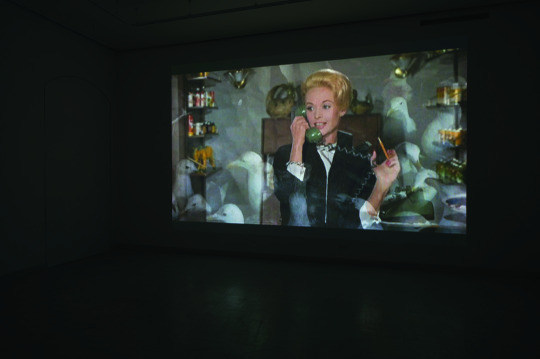
Igor and Svetlana Kopystiansky. Double Fiction. 2008. Installation view: Radvila Palace Museum of Art, exhibition Igor & Svetlana Kopystiansky. 2023-2024.
"Double Fiction"(2008) by Igor and Svetlana Kopystiansky based at "The Birds" by Alfred Hitchcock.
…“Two revelatory pieces taken from the classical narrative cinema, Spellbound (2009) and Birds (2008), rework canonical Alfred Hitchcock films employing the same technique used in Pink and White. In this case, the moving image is not found footage but a finely crafted example of the classical cinema, created by a director employing elaborately staged action, cinematography, a script, acting, lighting, composition, and sound. In the case of Spellbound, a three-minute loop superimposes a sequence from the film played forward with the same scenes played in reverse. The two sequences come together in the middle and then continue on to either the conclusion or beginning of the sequence. Narrative anticipation and the intense drama of the action reaches its climax as a single scene. Time folds upon itself as we watch, but also as we recall what we already know. This method is elaborated further in The Birds, in which the entire Hitchcock film is shown with sound, from beginning to end and over again in reverse, from the end to the beginning. (The credits have been removed.) At the mid-point, the film becomes one as the superimposed films line up and become a single film. A work of astonishing simplicity and originality, it takes the meta-cinematic work of such artists as Douglas Gordon and Stan Douglas and the treatment of language in Gary Hill’s videotapes into the complex terrain of narrative, storytelling, and perception. The anticipation and remembrance of time and events through the conventions of storytelling, as we see in the Birds, also becomes a means to provide new insight into that film’s apocryphal vision of nature and human relationships. Early scenes are joined with later scenes, and it is almost as if the film itself is dreaming its own narrative as it unfolds. Birds is a brilliant choice, since it heightens the dramatic intensity of the narrative cinema and the nuance of the performances in a deconstruction of the meanings of the original film. It also places the viewer before the screen as an active participant. In a sense, the film haunts itself, as the action that unfolds anticipates its own conclusion, and the relationships between the characters become tragically predicted and realized. The destruction that is foreshadowed actually appears in the film at its beginning.
Igor and Svetlana Kopystiansky have created a dialectical process by integrating the point of view of the camera and the play of time. The viewer becomes engaged in active looking and creates meaning out of moving images through that cognitive process. These artists have created an aesthetic text that is haunted by memory, whether represented by found footage, by the chance recordings of plastic bags blowing along on the sidewalk or the movement of people on the street, or by the rediscovery of scenes from well-known movies. Time erases itself as scenes overlap and change, in the process refashioning the moving image into an aesthetic text of timeless fascination.”
Excerpt from: The Play of Time: The Art of Svetlana and Igor Kopystiansky
By John G. Hanhardt, (Senior Curator for Media Arts, Smithsonian American Art Museum)
Published in: "Igor & Svetlana Kopystiansky". The Lithuanian National Museum of Art. 2023. Foreword: Arūnas Gelūnas. Texts by Michel Gauthier, John G. Hahnhardt. Quotations from texts about Kopystiansky’s by Kai-Uwe Hemken, Philippe-Alain Michaud, Anthony Spira, Adam D. Weinberg.(Lithuanian, English, French) ISBN 9786094261824
Published in: 2010 Kopystiansky. Double Fiction/Fiction Double. Musée d”Art Moderne de Saint-Étienne. Texts by John G. Hanhardt, Philippe-Alain Michaud. Les Presses du Réel
#center pompidou#Smithsonian American Art museum#Igor Kopystiansky#svetlana kopystiansky#centre pompidou paris#John Hanhardt#Art American#video art
1 note
·
View note
Text
Charles Bronson
Charles Bronson,

the "death enforcer" died 20 years ago
Childhood in the mine, the name "Soviet" and the burp that started a career, everything you didn't know about the most famous icon with the grim look of cinema
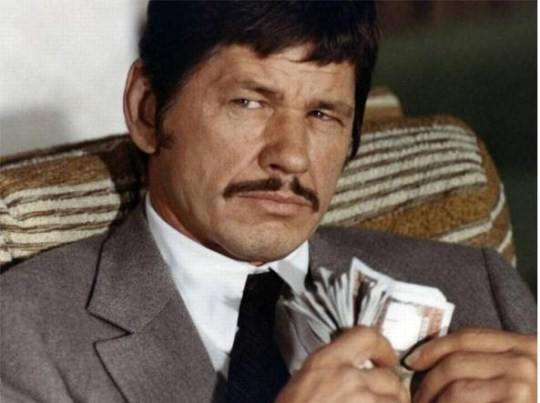
Origins
Charles Dennis Buchinsky was born on November 3, 1921 in Ehrenfeld, Pennsylvania, to parents who immigrated from Lithuania and was the eleventh of fifteen children, all of whom grew up in extreme poverty. In early childhood, Charles did not speak English, but he had to catch up quickly

Early fatigue
When Charles was ten, his father died and the boy followed in his footsteps by getting a job in the mine, like many of his peers, risking his life every day for about a dollar a week. Not too surprising that at that age the future stone face of American cinema was already a smoker.
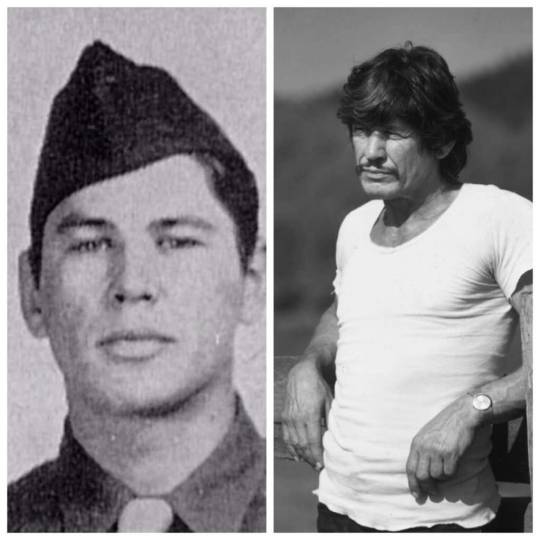
War
After becoming the first of the Buchinsky family to graduate, in 1943 Charles enlisted in the United States Army and fought in World War II as a pilot in twenty-five aerial missions.
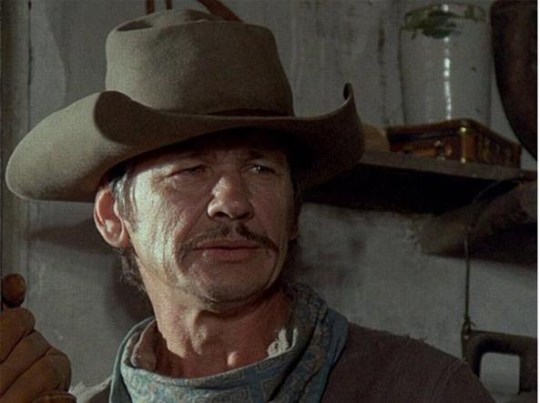
The name
At the beginning of his film career, Buchinsky had to stop for a moment to think about his own name. In the 1950s Senator Joe McCarthy launched a hunt for the alleged Communist who massacred intellectuals and artists across the country on charges of treason and collusion with the Soviet Union. Charles' Lithuanian surname might have made him an easy target, so the aspiring actor took on the all-American name of Bronson.

The first role
For his film debut in 1951's "Commander Johnny" Bronson resorted to a particular skill that no other of the suitors for the role of him had: that of burping on command.

European success
Before becoming an icon of genre cinema in America with "Death Wish" in 1974, Charles had difficulty breaking through in Hollywood, but by the late 1960s he was already a beloved face in Europe, thanks to western films such as “The Guns of San Sebastian” by Henri Verneuil and “Once Upon a Time in the West” by Sergio Leone.

Phobias
As a probable result of a childhood spent underground, Bronson suffered from claustrophobia, but he also had a constant fear of germs and infections, which perfectly explained his notorious aversion to handshakes.

Relations
In 1949 Bronson married colleague Harriet Tendler, with whom he had two children, Suzanne and Tony. The couple divorced in 1965 and three years later the actor returned to the altar with actress Jill Ireland, with whom he remained until her death in 1990 and with whom he had two more daughters, Zuleika and Katarina. Charles' third marriage was in 1998 to Kim Weeks.

The death
Charles Bronson died on August 30, 2003 at Cedars-Sinai Medical Center in Los Angeles after a long hospital stay. The actor had been in failing health since the late 1990s, when he was hospitalized for hip surgery. In the following years, he was also diagnosed with lung cancer and Alzheimer's. His grave is in Brownsville Cemetery in the town of West Windsor, Vermont.
Charles Bronson,
il “giustiziere della notte” moriva 20 anni fa
L’infanzia in miniera, il nome “sovietico” e il rutto che avviò una carriera, tutto quello che non sapevate sull’icona dallo sguardo torvo più famoso del cinema
Origini
Charles Dennis Buchinsky è nato il 3 novembre 1921 a Ehrenfeld in Pennsylvania, da genitori immigrati dalla Lituania e fu l’undicesimo di quindici figli, tutti cresciuti in povertà estrema. Nella prima infanzia, Charles non parlava inglese, ma dovette mettersi in pari alla svelta
Fatica precoce
Quando Charles aveva dieci anni il padre morì e il bambino seguì le sue orme ottenendo un lavoro in miniera, come molti coetanei, rischiando la vita ogni giorno per circa un dollaro a settimana. Non sorprende troppo che a quell’età il futuro volto di pietra del cinema americano fosse già un fumatore.
La guerra
Dopo essere diventato il primo della famiglia Buchinsky a prendere il diploma, nel 1943 Charles si arruolò nell’esercito degli Stati Uniti e combatté nella Seconda Guerra Mondiale come pilota in venticinque missioni aeree.
Il nome
All’inizio della sua carriera cinematografica, Buchinsky dovette fermarsi un attimo a pensare al proprio nome. Negli anni ’50 il senatore Joe McCarthy dette il via a una caccia al presunto comunista che fece strage tra gli intellettuali e gli artisti di tutto il paese con l’accusa di tradimento e collusione con l���Unione Sovietica. Il cognome lituano di Charles avrebbe potuto farne un facile bersaglio, così l’aspirante attore prese il nome tutto americano di Bronson.
Il primo ruolo
Per il suo debutto cinematografico in “Il comandante Johnny” del 1951 Bronson ricorse a una particolare abilità che nessun altro dei pretendenti al ruolo aveva: quella di ruttare a comando.
Successo europeo
Prima di diventare un’icona del cinema di genere in America con “Il giustiziere della notte” del 1974, Charles ebbe difficoltà a sfondare a Hollywood, ma già dalla fine degli anni ’60 fu un volto amatissimo in Europa, grazie a film western come “I cannoni di San Sebastian” di Henri Verneuil e “C’era una volta il West” di Sergio Leone.
Fobie
Come probabile risultato di un’infanzia passata sotto terra Bronson soffrì di claustrofobia, ma ebbe anche un terrore continuo di germi e infezioni, il che spiegava perfettamente la sua nota repulsione per le stette di mano.
Relazioni
Nel 1949 Bronson sposò la collega Harriet Tendler, con la quale ebbe due figli, Suzanne e Tony. La coppia divorziò nel 1965 e tre anni dopo l’attore tornò all’altare con l’attrice Jill Ireland, con la quale rimase fino alla sua morte nel 1990 e con la quale ebbe altre due figlie, Zuleika e Katarina. Il terzo matrimonio di Charles fu nel 1998 con Kim Weeks.
La morte
Charles Bronson morì il 30 agosto 2003 al Cedars-Sinai Medical Center di Los Angeles dopo una lunga degenza. L’attore era ormai di salute cagionevole dalla fine degli anni ’90, quando fu ricoverato per un’operazione all’anca. Negli anni successivi gli furono diagnosticati anche un tumore ai polmoni e l’Alzheimer. La sua tomba si trova al cimitero di Brownsville nella cittadina di West Windsor, Vermont.
#charles bronson#sergio leonesergioleone cinema film thegoodthebadandtheugly western movie spaghettiwestern leevancleef movies enniomorricone el#cinema western#action#western#male actor#actor#muvi police
1 note
·
View note
Text


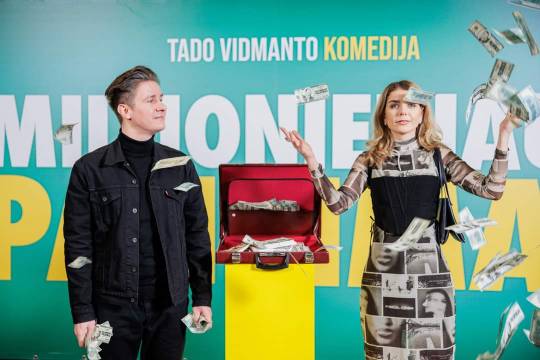
Some LRT photos from the premiere of Tadas Vidmantas comedy "Millionaire's Inheritance"
2 notes
·
View notes
Text
Baltic Cinema

Introduction
Cinema in the Baltic States has a rich and complex history that reflects the region's cultural and political identity. The Baltic States consist of three countries situated in northeastern Europe: Estonia, Latvia, and Lithuania. These countries share a common history of occupation and repression, but they also have unique cultural and linguistic traditions that have contributed to their cinematic output.
The Baltic States gained independence from the Soviet Union in the early 1990s, after a long period of occupation and political repression. Estonia, Latvia, and Lithuania all became independent in 1991, and since then, they have been working to rebuild their cultural institutions and promote their national identities.
Estonia is the northernmost country of the Baltic States, and it has a population of around 1.3 million people. The Estonian language is closely related to Finnish, and Estonia has a vibrant cultural scene that includes theater, music, and film. Some notable Estonian films include "Klass" (2007), "Tangerines" (2013), and "November" (2017).
Latvia is situated between Estonia and Lithuania, and it has a population of around 1.9 million people. The Latvian language is part of the Baltic language group, which also includes Lithuanian. Latvia has a rich cultural heritage that includes traditional music and dance, as well as a growing contemporary arts scene. Some notable Latvian films include "Dream Team 1935" (2012), "Mother, I Love You" (2013), and "Blizzard of Souls" (2019).
Lithuania is the southernmost of the Baltic States, and it has a population of around 2.8 million people. The Lithuanian language is the oldest surviving Indo-European language, and Lithuania has a rich cultural heritage that includes folk music, literature, and art. Some notable Lithuanian films include "The Earth of the Blind" (1992), "Zero" (2018), and "Parasite Doctor Suzune: Genesis" (2020).

Cinema Culture
Baltic cinema culture is diverse and reflects the different cultural and linguistic traditions of Estonia, Latvia, and Lithuania. While there are no strict rules for cinema etiquette, moviegoers in the Baltic States generally follow common courtesy, such as arriving on time, avoiding talking during the film, and turning off mobile phones.
In terms of snacks, popcorn is a popular choice at movie theaters in the Baltic States, as well as other classic cinema snacks such as candy and soft drinks. In Lithuania, a popular snack at the movies is šakotis, a traditional Lithuanian cake that is often served at special occasions.
There are several popular film festivals and movie events in the Baltic States that celebrate local and international cinema. The Tallinn Black Nights Film Festival, held annually in Estonia, is one of the largest film festivals in Northern Europe and features a diverse selection of films from around the world. The Latvian National Film Festival "Lielais Kristaps" showcases the best Latvian films of the year and is considered one of the most prestigious film events in Latvia. In Lithuania, the Vilnius International Film Festival is a popular event that features a wide range of films from Lithuania and other countries.
In addition to these major festivals, there are also smaller, more specialized events that cater to different audiences and interests. For example, the "PÖFF Shorts" festival in Estonia focuses specifically on short films, while the "Baltic Pitching Forum" in Lithuania is a platform for emerging filmmakers to showcase their work and connect with industry professionals.
Overall, Baltic cinema culture is vibrant and diverse, with a range of festivals and events that celebrate local and international cinema. Moviegoers in the Baltic States enjoy a variety of snacks while following common cinema etiquette, and the region's unique cultural and linguistic traditions are reflected in its cinematic output.

Popular Actors
Arvo Kukumägi (Estonia): Arvo Kukumägi was a prolific Estonian actor who appeared in over 80 films during his career. He was known for his versatility and range, playing a variety of roles in both comedic and dramatic films. Some of his most memorable performances include his role in the classic Estonian film "Spring" (1969) and his portrayal of a struggling artist in "Fire Cross" (1982).
Maija Plisetskaya (Latvia): Maija Plisetskaya was a legendary Latvian ballet dancer and actress who became one of the most famous ballerinas of the 20th century. In addition to her celebrated career as a dancer, Plisetskaya also appeared in several films, including "Anna Karenina" (1975) and "The Lady with the Dog" (1960). She was known for her striking beauty, powerful presence, and impeccable technique, and her legacy continues to inspire dancers and performers around the world.
Donatas Banionis (Lithuania): Donatas Banionis was a prominent Lithuanian actor who starred in several Soviet-era films, including the classic science fiction film "Solaris" (1972). He was known for his naturalistic style and his ability to convey complex emotions and ideas with subtlety and nuance. Banionis also appeared in several Lithuanian films, including "The Beauty" (1969) and "The Witch" (1988).
Ita Ever (Estonia): Ita Ever is an acclaimed Estonian actress who has appeared in a wide range of films, television shows, and stage productions. She is known for her powerful performances and her ability to bring depth and complexity to her roles. Some of her most notable performances include her portrayal of a grieving mother in "The Class" (2007) and her role as a strong-willed grandmother in "The Fencer" (2015).
Mads Mikkelsen (Denmark, with Baltic ancestry): Mads Mikkelsen is a Danish actor who has become a familiar face in international cinema. While Mikkelsen was born and raised in Denmark, he has Baltic ancestry, with his father hailing from Estonia. Mikkelsen has appeared in a wide range of films and television shows, including "Casino Royale" (2006), "Hannibal" (2013-2015), and "Rogue One: A Star Wars Story" (2016). He is known for his intense and captivating performances, and has won several awards for his work, including the Best Actor award at the Cannes Film Festival in 2012.
Kristofer Hivju (Norway, with Baltic ancestry): Kristofer Hivju is a Norwegian actor who has gained international fame for his role as Tormund Giantsbane on the HBO series "Game of Thrones" (2013-2019). Like Mads Mikkelsen, Hivju has Baltic ancestry, with his father hailing from Estonia. Hivju has also appeared in several Norwegian films and television shows, including "The Wave" (2015) and "Twin" (2019), and is known for his charismatic and engaging performances.
Ieva Andrejevaite (Lithuania): Ieva Andrejevaite is a Lithuanian actress who has gained international recognition for her performances on stage and screen. She has appeared in several Lithuanian films, including "Vanishing Waves" (2012) and "Miracle" (2017), and has also starred in the HBO Europe series "Patria" (2020). Andrejevaite is known for her raw and emotional performances, and has been praised for her ability to convey complex characters with depth and nuance.

0 notes